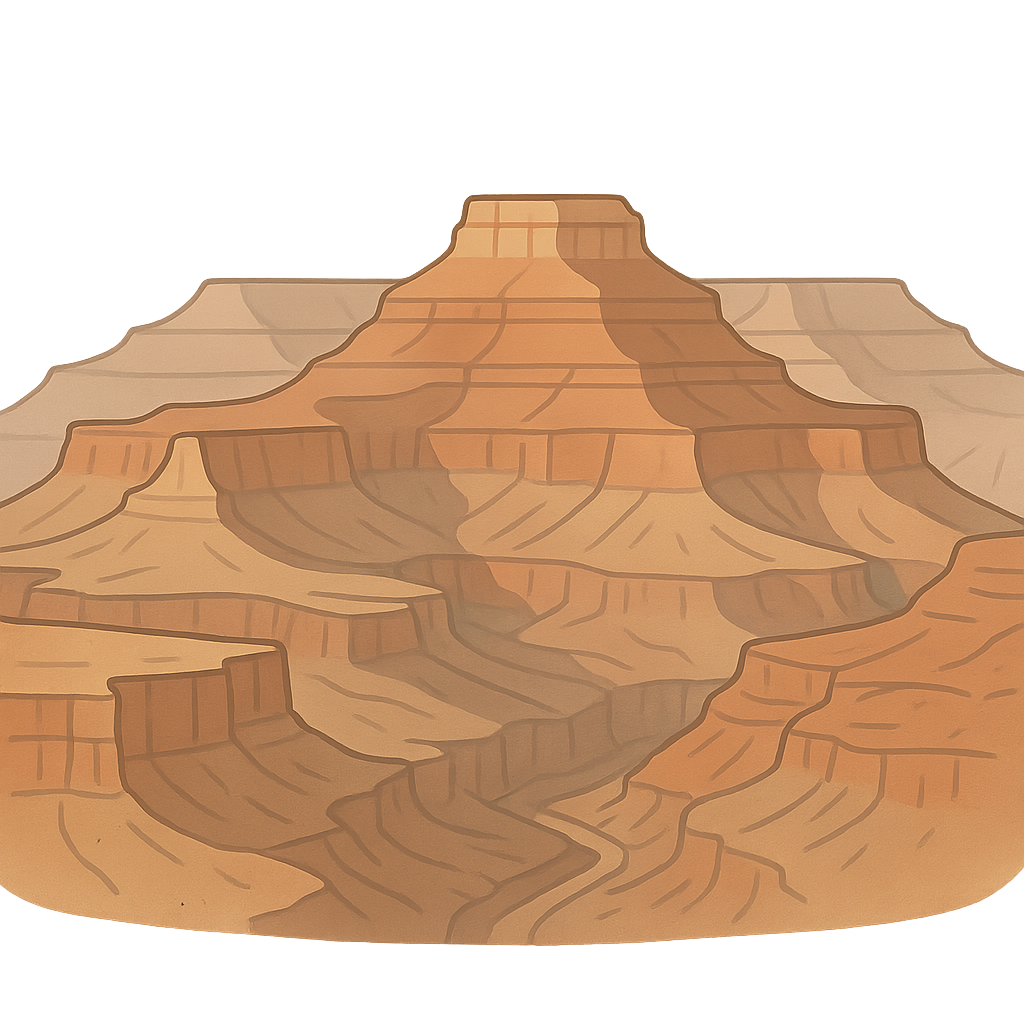The Earth's Great Storybook
Imagine standing at the edge of the world. Below you, a giant canyon stretches farther than your eyes can see, a breathtaking wound in the earth's surface. The air is still and quiet, so quiet you can hear the whisper of the wind as it dances along the cliffs. Sunlight paints the layers of rock in brilliant shades of red, orange, and deep purple, changing colors as the day goes on. You feel very small, but also part of something ancient and grand. Birds soar on currents of air deep within my walls, and a river snakes like a silver ribbon at the very bottom. For millions of years, I have held the secrets of the planet within my stone walls, a silent giant carved into the heart of Arizona. I am the Grand Canyon.
My story begins with a mighty artist, the Colorado River. It wasn't a fast artist, but a patient and powerful one. For millions and millions of years, this river worked tirelessly, flowing and rushing, carrying sand and rock that scraped away at the land. Slowly, inch by inch, it carved deeper and deeper into the stone, revealing the story of the Earth, layer by layer. Each layer of my rock is like a page in a history book. The dark, hard rock at the bottom is almost two billion years old. Other layers tell tales of ancient oceans filled with tiny sea creatures, vast sandy deserts where winds blew dunes across the land, and swampy coastlines from a time long before dinosaurs. It took an immense amount of time, far longer than anyone can imagine, for the river to sculpt me into the wonder I am today.
Long before explorers from far-off lands saw my beauty, I was a home. For thousands of years, people lived within my walls and along my rims. The Ancestral Puebloans built their homes in my cliffs, leaving behind small stone rooms and pottery that tell the story of their lives. Later, tribes like the Havasupai and Hualapai made their homes deep inside my canyons, viewing me as a sacred and life-giving place. My human story took a new turn in the year 1540, when a Spanish explorer named García López de Cárdenas and his soldiers became the first Europeans to gaze upon my vastness. They were stunned by my size and could not even figure out how to get to the river below. But the most daring adventure was yet to come. In 1869, a brave explorer and scientist named John Wesley Powell led a small group of men in wooden boats down the wild Colorado River. They faced dangerous rapids and unknown challenges to map my twists and turns for the very first time, revealing my secrets to the world.
As more people heard about me, they realized I was a treasure that needed to be protected. In 1903, a very important visitor, President Theodore Roosevelt, stood on my rim and was so inspired that he declared I should be preserved for everyone. He said, “Leave it as it is. You cannot improve on it. The ages have been at work on it, and man can only mar it.” His powerful words helped protect me, and in 1919, I officially became a National Park, a special place for all people for all time. Today, my life is filled with the happy sounds of visitors from all over the world. They hike my trails, raft my river, and stare in wonder from my edges. I share with them the story of our planet, the power of patience, and the breathtaking beauty of nature. I am a reminder that some things are best left wild and free, a great storybook of stone that will continue to inspire wonder for generations to come.
Reading Comprehension Questions
Click to see answer
